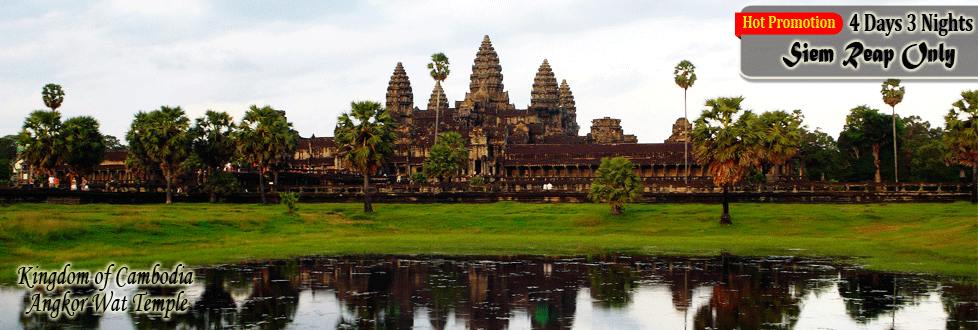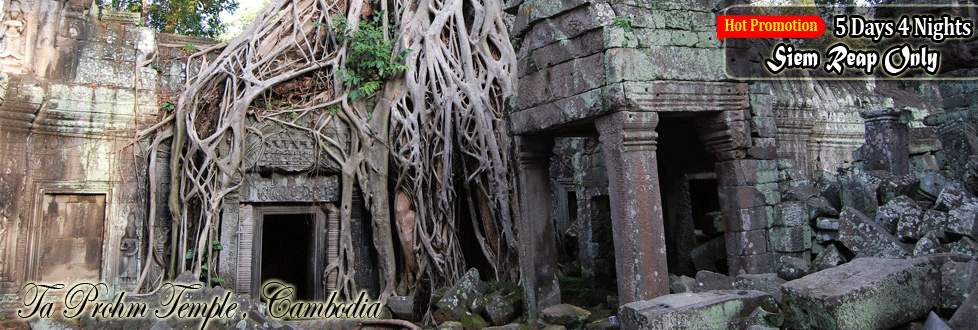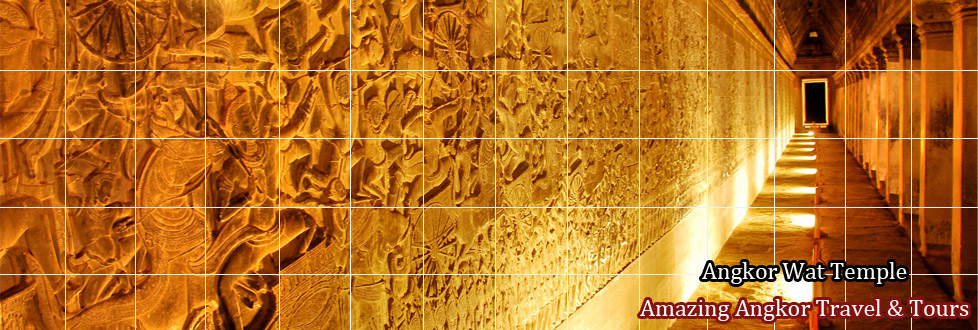Cambodia People
Cambodian Populations (Khmer: ចំនួនប្រជាជនកម្ពុជា) The population of Cambodia is 13,363,421 (2004 estimate). Population growth per year is estimated at 1.8 percent, one of the highest rates in Asia. The rate of infant mortality is also high. The population density is 76 persons per sq km (196 per sq mi), with the densest concentrations on the heavily cultivated central plain. The mountainous regions of the country, where malaria is widespread, are thinly populated, as are the poorly watered northern provinces. During the late 1970s, under the brutal rule of the Khmer Rouge, all of Cambodia’s towns were depopulated, and residents were forcibly relocated to rural areas. A process of reurbanization began in the 1980s. Cambodia’s capital, Phnom Penh, is situated at the junction of the Mekong and Tonlé Sab rivers. Other major cities are Bãtdâmbâng, Kâmpóng Cham, Kampot, and Cambodia’s only deep-water port, Kampong Soam, located on the Gulf of Thailand.
Ethnic Groups and Languages
Ethnic Cambodians, or Khmer, constitute 90 percent of the population. About 5 percent of the country’s inhabitants are of Vietnamese origin, and 1 percent are Chinese. Seminomadic tribal groups concentrated in the mountainous northeast make up the remaining 4 percent of the population. Cambodia’s official language is Khmer, or Cambodian, which belongs to the Mon-Khmer family of languages (see Austro-Asiatic Languages). French was formerly an important secondary language in the country, but English gained considerable ground in the 1990s. Other languages spoken include Vietnamese and an assortment of South Chinese dialects.
Religion
At least 85 percent of Cambodia’s inhabitants adhere to Theravada Buddhism, which is the dominant religion in most Southeast Asian nations. Buddhism originated in India in the 6th century bc and arrived in Cambodia during the first centuries ad. At first Mahayana Buddhism predominated, but after the 14th century Theravada gradually replaced the older school as the primary religion. Nevertheless, a minority of modern Cambodians still practices Mahayana Buddhism. Other religions practiced in Cambodia include Roman Catholicism and Islam.
Education
An estimated 71 percent of Cambodia’s adult population is literate. Public education is free and compulsory for the first 6 years. Primary school attendance increased rapidly in the 1990s, and by 2000–2001 virtually all children were enrolled, as well as many older people who were unable to attend school in earlier years. Secondary education was more limited, with only 19 percent of eligible children enrolled. Seven institutions of higher learning, including the University of Phnom Penh, the University of Fine Arts, and the University of Agricultural Sciences, operate in the country. Only 3 percent of Cambodians of usual university age were enrolled in these schools in 2000–2001.
Perennially handicapped by insufficient funding, Cambodia’s educational system was devastated in the late 1970s when the Khmer Rouge regime closed schools and executed thousands of teachers. The regime viewed intellectuals, among others, as potential sources of opposition to its attempt to create an ideal socialist, agrarian society. In the 1980s thousands more teachers fled the country or sought better-paying work. Ever since then, efforts to revive the education system have been hampered by a shortage of funds and trained personnel.
Way of Life
Eighty percent of Cambodia’s people live in rural areas, where their principal occupation is subsistence farming on family-operated holdings. In rural Cambodia, most houses are built of palm leaf and bamboo and are often raised on stilts for protection from annual floods. A rural village (phum) consists of a group of houses, usually clustered around a Buddhist monastery, or wat.In the cities, life for the poor resembles life in the countryside, but sanitary conditions are worse and violent crime is much more frequent. Wealthy and middle-class Cambodians value material possessions, which reflect their social standing. In the 1990s hundreds of extravagant villas were built for members of the political and commercial elite.
Most rural Cambodians wear simple clothing and have few material possessions. Women usually dress modestly in cotton shirts and ankle-length skirts, reserving their multicolored, locally woven silks for religious festivals. A cotton garment called a krama is worn by both men and women as a head covering, as a loincloth (for bathing), and as a carrying bag. Urban Cambodians usually wear Western-style clothing. Rice and fish form the basis of the Cambodian diet. Cambodian families are large, but infant mortality, especially from intestinal disorders, remains high. Women head a large proportion of family units because many men were killed in the warfare of the 1970s and 1980s. In most families, females manage the household economy. Women also constitute the majority of vendors at local markets. Traditionally, boys became monks for a few months during their adolescence, but this practice is fading.
Laos People and Population
- Population: 6.2 million.
- Density: 23 people/square kilometer.
- The population consists of 49 ethnic groups, in 4 main linguistic.
The Lao-Tai Family includes 08 ethnic groups: Lao, Phouthai, Tai, Lue, Gnouane, Young, Saek and Thai Neua.
The Mon-Khmer Family includes 32 ethnic groups: Khmu, Pray, Singmou, Khom, Thene, Idou, Bid, Lamed, Samtao, Katang, Makong, Try, Trieng, Ta-oi, Yeh, Brao, Harak, Katou, Oi, Krieng, Yrou, Souai, Gnaheune, Lavy, Kabkae, Khmer, Toum, Ngouane, Meuang and Kri.
The Tibeto-Burmese Family includes 07 ethnic groups: Akha, Singsali, Lahou, Sila, Hayi, Lolo and Hor.
The Hmong-Loumien category has 02 main tribes: Hmong and Loumien (Yao).These multi-ethnic people are scattered across the country each with their own unique traditions, culture and language.
Myanmar Population
The Republic of the Union of Myanmar has a population of over 60 million. The major racial groups are Bamar, Kachin, Kayah, Kayin, Chin, Mon, Rakhine and Shan. The people are called Myanmar.
Thailand People
Throughout her long history, Thailand has gently absorbed immigrants. Many were skilled as writers, painters, sculptors, dancers, musicians and architects, and helped enrich indigenous culture. People inhabiting Thailand today share rich ethnic diversity mainly Thai, Mon, Khmer, Laotian, Chinese, Malay, Persian and Indian stock with the result that there is no typically Thai physiognomy or physique. There are petite Thais, statuesque Thais, round faced Thais, dark-skinned Thais and light-skinned Thais. Some 80% of all Thais are connected in some way with agriculture which, in varying degrees, influences and is influenced by the religious ceremonies and festivals that help make Thailand such a distinctive country.
Vietnam People
Socialist Republic of Vietnam
Land area: 125,622 sq mi (325,361 sq km); total area: 127,244 sq mi (329,560 sq km)
Population (2007 est.): 85,262,356 (growth rate: 1.0%); birth rate: 16.6/1000; infant mortality rate: 24.4/1000; life expectancy: 71.1; density per sq mi: 679
Capital (2003 est.): Hanoi, 2,543,700 (metro. area), 1,396,500 (city proper)
Largest cities: Ho Chi Minh City (Saigon), 5,894,100 (metro. area), 3,415,300 (city proper); Haiphong, 581,600; Da Nang, 452,700; Hué 271,900; Nha Trang, 270,100; Qui Nho'n, 199,700
Languages: Vietnamese (official); English (increasingly favored as a second language); some French, Chinese, Khmer; mountain area languages (Mon-Khmer and Malayo-Polynesian)
Ethnicity/race: Kinh (Viet) 86.2%, Tay 1.9%, Thai 1.7%, Muong 1.5%, Khome 1.4%, Hoa 1.1%, Nun 1.1%, Hmong 1%, others 4.1% (1999)
Religions: Buddhist 9%, Catholic 7%, Hoa Hao 2%, Cao Dai 1%, Protestant, Islam, none 81%
Literacy rate: 94% (2003est.)
Geography
The Socialist Republic of Vietnam is an independent country with its sovereignty, unification and entire territory. It includes mainland, islands, territorial waters and air space. Looking at the map, you can see Vietnam which is a curved and S shaped landstrip. It is located in the centre of South East Asia with the area of 329,241 km2 and the coast of 3,260 km and the land border of 4,510 km. On the mainland, from the north pole to the south pole (as the crow flies) it is 1,650 km long, from the east pole to the west pole, the widest place is 600 km and the narrowest one is 50 km.




.jpg)
.jpg)
.jpg)

.jpg)
.jpg)
.jpg)

.gif)

 Visa and Passport
Visa and Passport 


.png)
